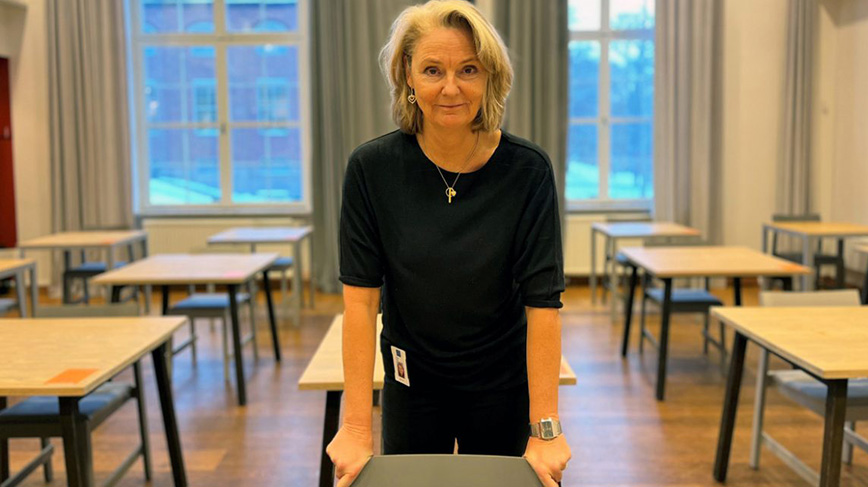She co-ordinates the giant relocation puzzle

Who will do what, when and how? Finding quick solutions, seeing the big picture and thinking strategically are the basis of Helene Rune's task as programme coordinator for the campus relocations.
“It is complex and at the same time very concrete. It suits me perfectly!”
With a background as administrative manager at the SCI School and a habit of dealing with highs and lows in everyday life, with small margins and quick decisions, as well as extensive knowledge of KTH, the role of programme coordinator for the campus relocations seems to fit perfectly.
“I am an operational person, and this is something completely new without processes and previous solutions to fall back on. ”
Moving two of KTH's five campuses is a gigantic puzzle and something of a logistical challenge. The basic idea is that this will revitalize KTH's research and education while saving money. The move is expected to save around SEK 60 million a year in cost of premises from 2027.
A team effort
Helene Rune is careful to emphasize that this is a team effort that will affect all activities at KTH in one way or another. The three project managers, Anna Jerbrant ITM, Gunnar Malm, EECS and Sebastiaan Meijer, CBH, who are leading the relocation projects from KTH Södertälje to KTH Campus and KTH Flemingsberg and from KTH Kista to KTH Campus, have done extensive preparatory work that is now moving into a more operational mode.
“All support functions have also stepped up a gear and provide good support to the project managers. ”
In her role as coordinator, she has created a structure for all support functions in HR, communication, finance, education administration, infrastructure and IT, which must be proactive, synchronized and provide the project managers with documentation, keep track of details and legal requirements, any deadlines and always solve and answer new questions.
“I have a fairly large need for control and take full responsibility for my assignments, so consultation and co-operation within and across school boundaries are important,” says Helene Rune. It is a competent and strong-willed team that we work with.
The work is in full swing and the main features in the form of timetables, finances, inventory of rental agreements, etc. are almost complete.
“The work is moving into a more concrete phase, we will measure the premises exactly, review the offices and labs, what may need to be rebuilt, changed, and so on. ”
Overview of learning environments
A further step is to appoint a working group with representatives from all schools to develop a proposal on how KTH's learning environments should be developed and equipped. This is because more and more students are coming to KTH Campus in connection with the move from Kista and Södertälje. The proposals should also be in line with various development projects underway in education, such as the exam pilot, e-learning and Education of the Future.
The assignment was decided on 12 March by the President in the form of a supplementary assignment to the programme directive.
On 15 September, the group, with Helene Rune as coordinator, will present its proposal.
Many people still wonder how everyone will fit in when five campuses become three.
“I'm not worried. KTH has survived a pandemic and found different solutions, for example in terms of teaching and utilization of digital technology. It is important to be pragmatic and free-thinking - space can always be used in new ways. Students will be accommodated; classrooms could serve as study spaces outside of scheduled hours - as it was in the past.
However, we will not compromise on quality and reputation,” Rune says.
Text: Jill Klackenberg
Photo: Marta Marko-Tisch
